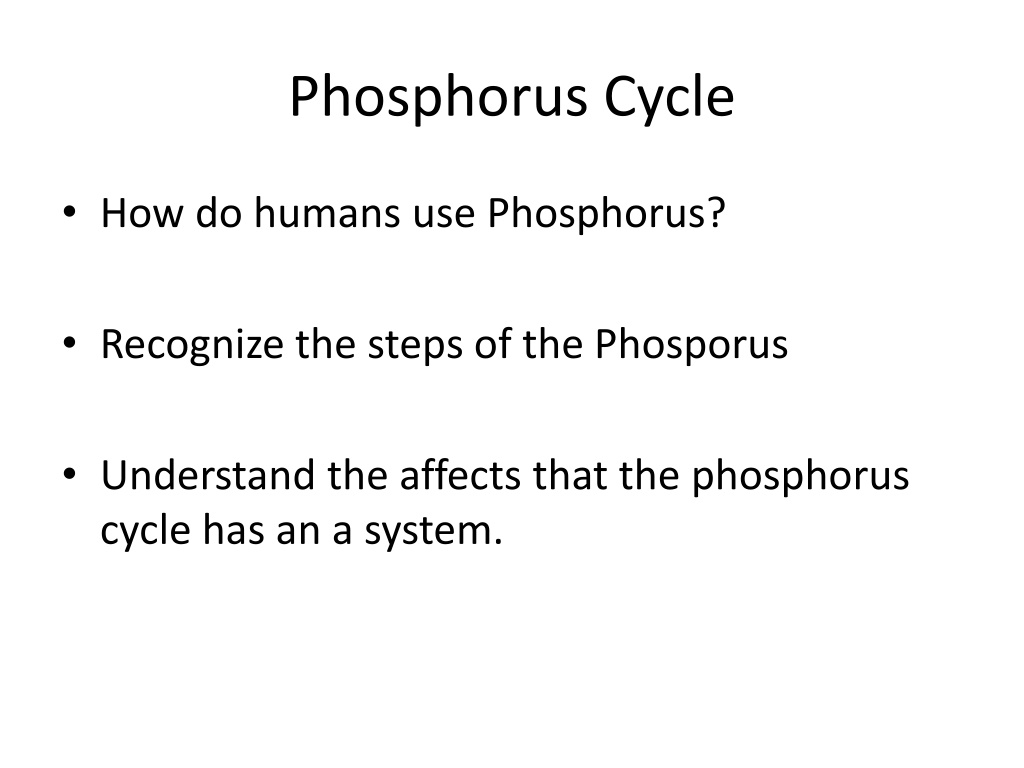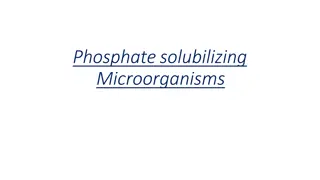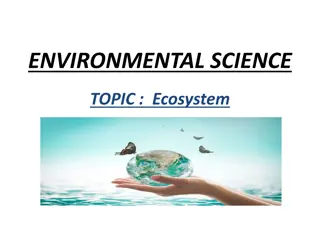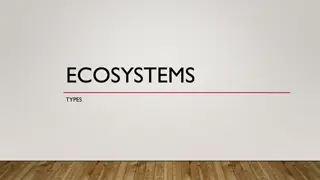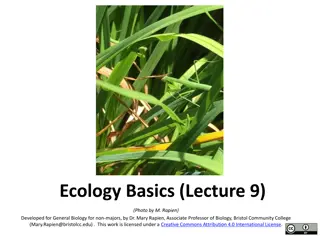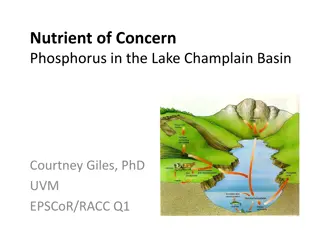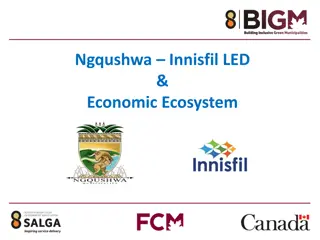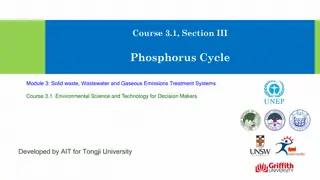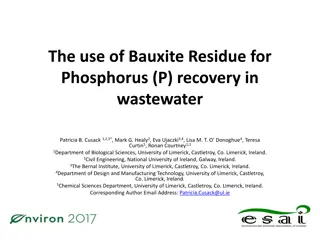Understanding the Phosphorus Cycle and Its Impact on Ecosystems
Humans use phosphorus in various ways, from being a vital component in DNA, RNA, and cell membranes to its role in energy transfer processes. The phosphorus cycle involves steps such as weathering of rocks, phosphate mining for fertilizers, excretion/decomposition, and geologic forces. However, excessive phosphorus can lead to negative effects like algal blooms in marine systems. Human activities, such as using phosphates in detergents and fertilizers, have impacted the phosphorus cycle. This cycle plays a crucial role in maintaining balance in ecosystems, making it essential to understand its dynamics.
Download Presentation

Please find below an Image/Link to download the presentation.
The content on the website is provided AS IS for your information and personal use only. It may not be sold, licensed, or shared on other websites without obtaining consent from the author. Download presentation by click this link. If you encounter any issues during the download, it is possible that the publisher has removed the file from their server.
E N D
Presentation Transcript
Phosphorus Cycle How do humans use Phosphorus? Recognize the steps of the Phosporus Understand the affects that the phosphorus cycle has an a system.
Phosphorus Organisms need phosphorus for biological processes. It is a major component of DNA/RNA/ATP (important for energy transfer) as well as phospholipids that form all cell membranes. Required by both plants and animals Limiting nutrient in many fresh water/marine food webs http://www.youtube.com/watch?v=RKkC2JpjaGc
Phosphorus cycle (cont.) Steps: *1. Weathering of uplifted rocks lead to phosphates on land. (some phosphates go back to ocean) *1: Phosphate mining leads to the creation and use of phosphate fertilizers. Applied to fields (leaching) and can either run off into streams, become part of soil pool, or be absorbed by plants 2:Excretion/decomposition release phosphates on land or in water. 3: Dissolved phosphates contribute to the ocean sediments. They then begin to convert into phosphate rocks. 4: Geologic forces can slowly lift up phosphate rocks from the ocean floor to form mountains.
Negative Affects of Phosphorus Too much phosphorus can negatively affect a system, mostly marine systems. Ex) The Algal bloom http://www.youtube.com/watch?v=YO3Gg3Yf J84
Human Impacts on Phosphorous Cycle From the 1900 s through 1940 s, phosphates used in laundry detergents caused leached phosphorus emissions into streams, rivers, and lakes. Fertilizers containing phosphorus lead to phosphates in water (excess)
Quiz 1) Phosphorus is a major component of ? 2) Describe the steps of the phosphorus cycle 3) What is an Algal Bloom? 4) How do humans use phosphorus for agriculture? 5) Why is phosphorus a limiting nutrient in marine systems? 6) In the mid to late 1900 s, phosphates were used in ?
Work Cited Friedland, A. (2011). Environmental science for ap. (1st ed., pp. 71-72). Algal bloom hit center stage. (2008, july 28). Retrieved from http://www.youtube.com/watch?v=YO3Gg3YfJ84 The phosphorus cycle in 65 seconds. (September, 2009 20). Retrieved from http://www.youtube.com/watch?v=RKkC2JpjaGc
